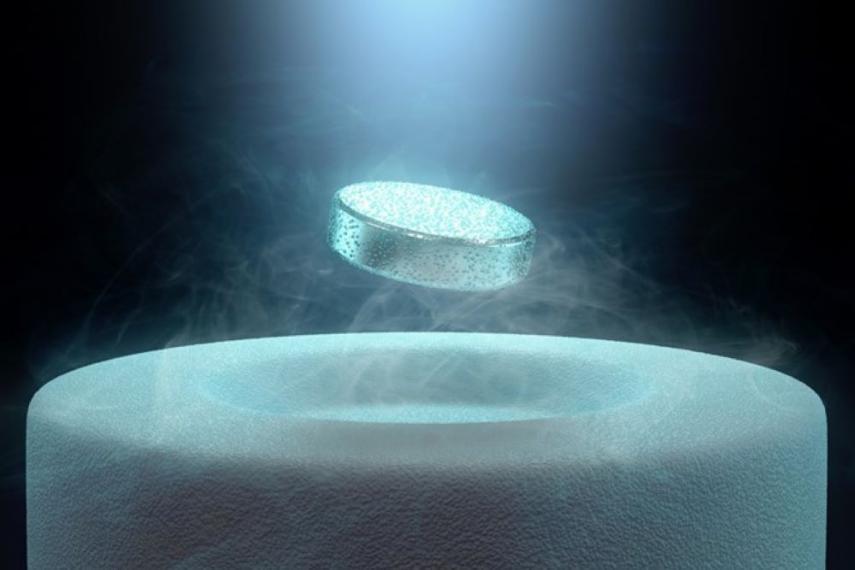The Chilling Challenge of Superconductivity

Physicists shed light on electrical conductivity with exciting technological possibilities.
From superfast computers to hyper-efficient electric motors to floating trains, superconductors have mind-blowing technological applications. A material is described as a superconductor when it can conduct an electric current with almost no energy loss. To reach superconductivity, materials must be cooled below a critical transition temperature. That means icy temperatures of -180 degrees Celsius or lower, which requires a constant supply of liquid nitrogen or liquid helium and is thus complex and costly.
Superconductivity at Room Temperature
University of Guelph physics professor Elisabeth Nicol and her post-doctoral fellow, Dr. Sabri Elatresh, along with Professor Emeritus Tom Timusk from McMaster University, are conducting research that could help alleviate the chilling challenge associated with superconductivity. Their team is working to learn more about compounds and conditions that can attain superconductivity at warmer temperatures, which will bring us one step closer to the goal of achieving superconductivity at room-temperature.
Nicol and the team evaluated the structure and superconducting properties of a hydrogen-rich compound under high pressures, lanthanum hydride. At the time of publication, this compound was discovered to have the highest known critical transition temperature of -23 degrees Celsius under high pressures. Using a series of calculations, the researchers found that the key to higher-temperature superconductivity in lanthanum hydride was related to hydrogen rather than lanthanum. The high critical transition temperature of this compound is due to the electrons interacting with the hydrogen phonons (phonons being units of vibrational energy) and the lanthanum phonons had little effect. The team also highlights several superconducting properties associated with lanthanum hydride, with an emphasis on optical properties (e.g. reflectance), which have the potential to determine the critical temperature independently from other properties. This work follows previous studies by Nicol of superconducting pressurized hydrides published in Nature Physics, Physical Review Letters, and Physical Review B.
New Discoveries and New Directions
“Just recently, an article was published in Nature about the discovery of a new hydrogen-rich superconductor with a transition temperature of 15 degrees Celsius,” explains Nicol. “It is incredibly exciting—room temperature superconductivity has finally been attained after nearly 110 years of searching. Now, our challenge is to make these materials superconduct without the requirement of very high pressures. That ability would be transformative for technological applications.”

Elisabeth Nicol is a professor in the Department of Physics
This work was supported by the Natural Sciences and Engineering Research Council of Canada and Graham & Cedar and Compute Canada (www.computecanada.ca).
Elatresh SF, Timusk T, Nicol EJ. Optical properties of superconducting pressurized LaH 10. Phys. Rev. B. 2020 Jul 1. doi: 10.1103/PhysRevB.102.024501.